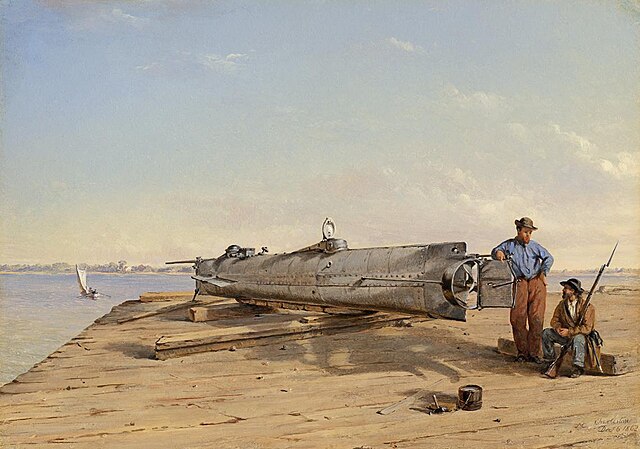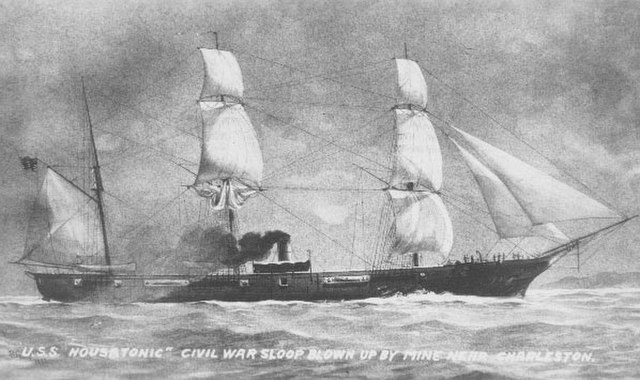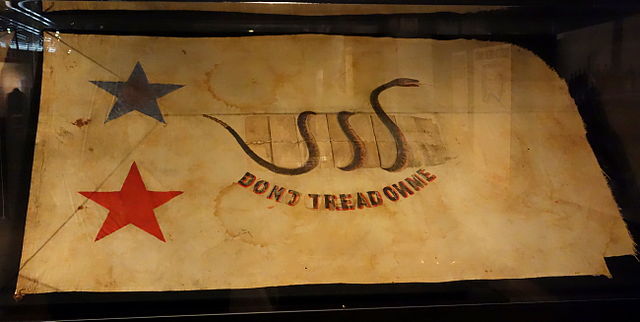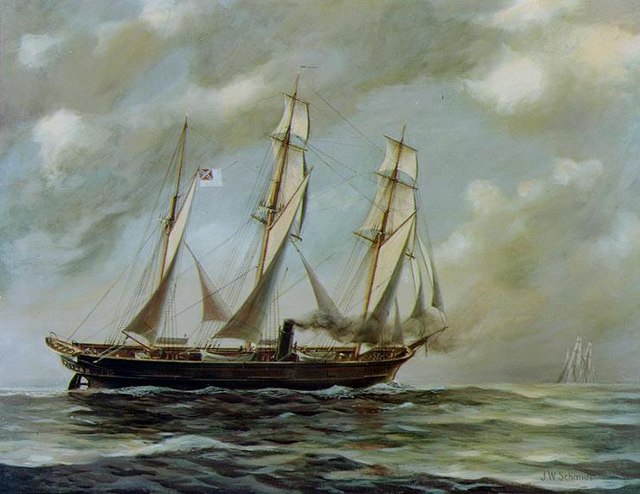Sinking of USS Housatonic
The Sinking of USS Housatonic on 17 February 1864 during the American Civil War was an important turning point in naval warfare. The Confederate States Navy submarine, H.L. Hunley made her first and only attack on a Union Navy warship when she staged a clandestine night attack on USS Housatonic in Charleston harbor. H.L. Hunley approached just under the surface, avoiding detection until the last moments, then embedded and remotely detonated a spar torpedo that rapidly sank the 1,240 long tons (1,260 t) sloop-of-war with the loss of five Union sailors. H.L. Hunley became renowned as the first submarine to successfully sink an enemy vessel in combat, and was the direct progenitor of what would eventually become international submarine warfare, although the victory was Pyrrhic and short-lived, since the submarine did not survive the attack and was lost with all eight Confederate crewmen.
A drawing of H.L. Hunley
USS Housatonic
Destruction of Housatonic; sketch by war artist William Waud
The Confederate States Navy (CSN) was the naval branch of the Confederate States Armed Forces, established by an act of the Confederate States Congress on February 21, 1861. It was responsible for Confederate naval operations during the American Civil War against the United States's Union Navy.
Pennant of Admiral Franklin Buchanan used at Battle of Mobile Bay, Alabama, 1864
Confederate naval flag, captured when General William Sherman took Savannah, Georgia, 1864
CSS Virginia, an ironclad warship
A 1961 painting of CSS Alabama







